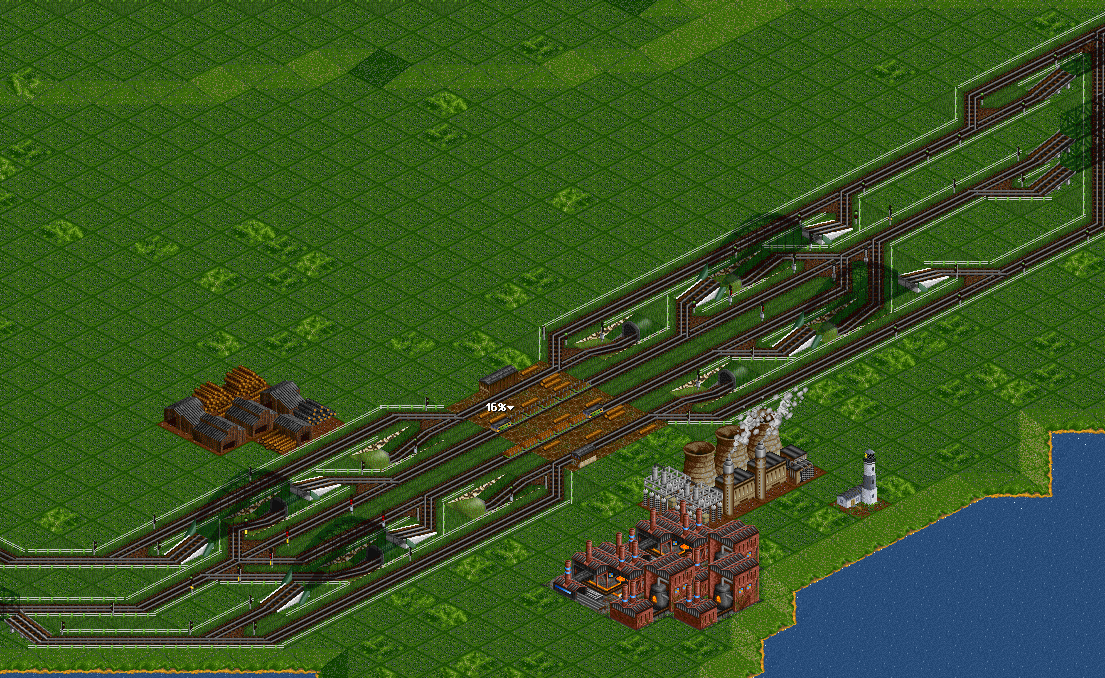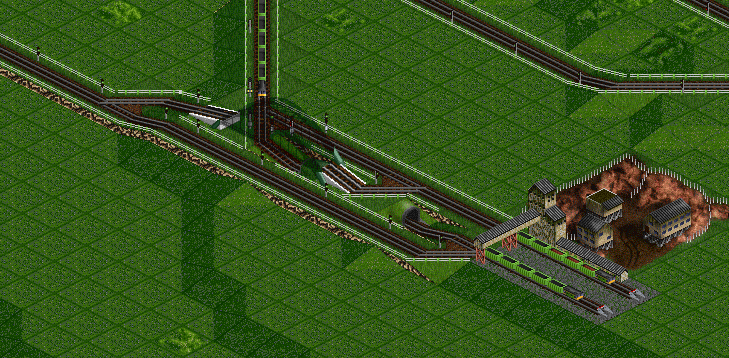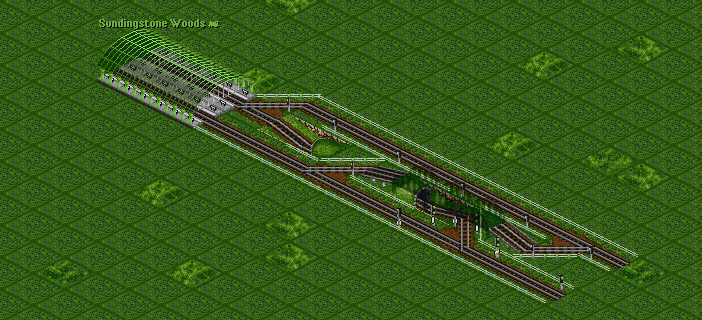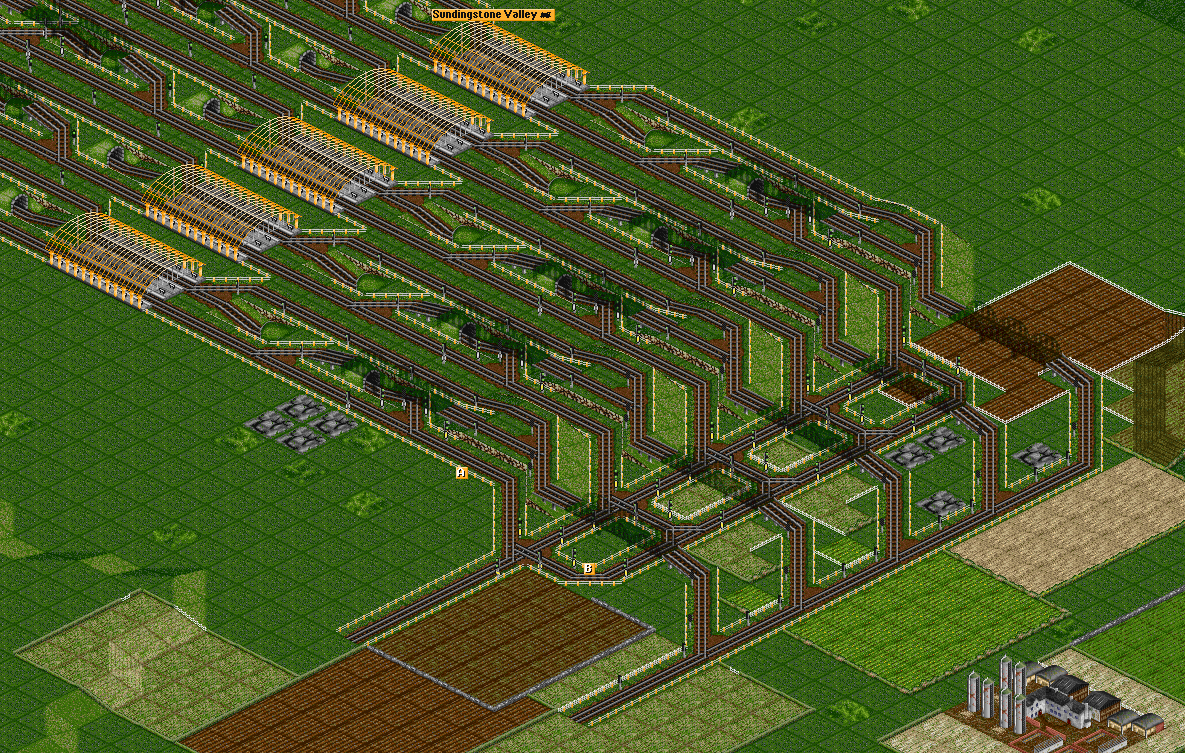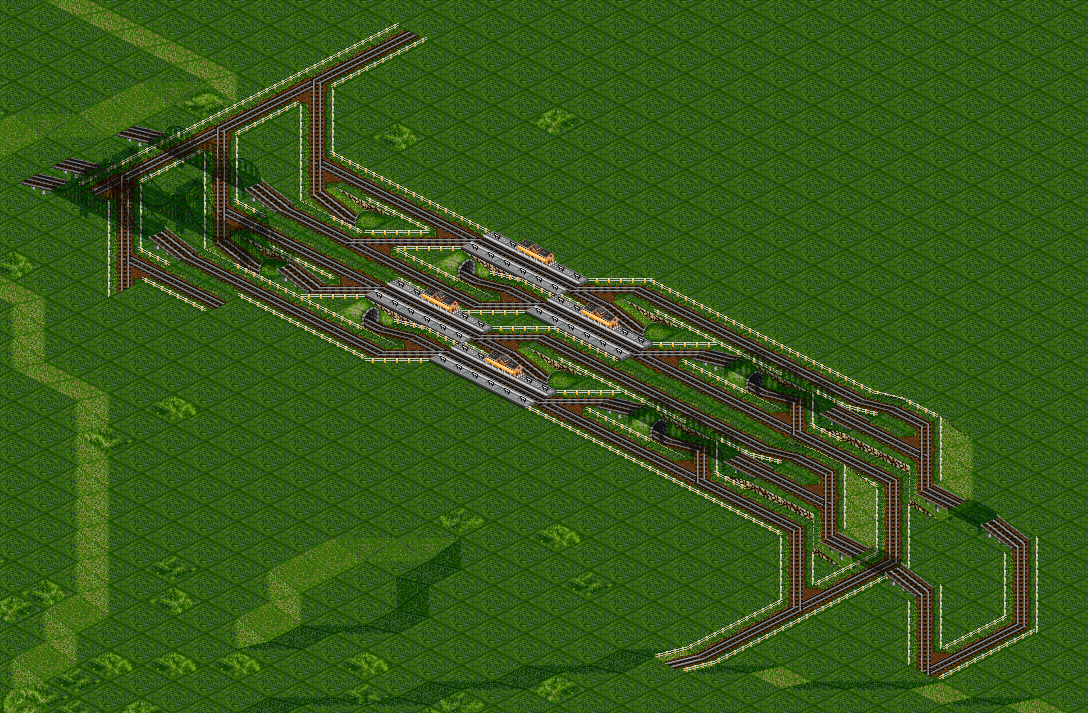Difference between revisions of "User:Andyp/BDRR"
From #openttdcoop wiki
(→Flexibility) |
|||
| Line 39: | Line 39: | ||
== Flexibility == | == Flexibility == | ||
| − | In practice I have noticed these layouts are better left for stations that have trains entering from both directions of the ML, such as a secondary industry drop. At a station with all traffic serving the same route (secondary pickups), these stations would be used from a single direction only. These layouts can also be used as a two entrance station with all traffic running the same direction from the ML, but it takes up far more space than more conventional two entrance layouts. It also works well for stations serving two separate loops. It allows for the two loops to share platforms without needing to mix traffic, see coal transfer in | + | In practice I have noticed these layouts are better left for stations that have trains entering from both directions of the ML, such as a secondary industry drop. At a station with all traffic serving the same route (secondary pickups), these stations would be used from a single direction only. These layouts can also be used as a two entrance station with all traffic running the same direction from the ML, but it takes up far more space than more conventional two entrance layouts. It also works well for stations serving two separate loops. It allows for the two loops to share platforms without needing to mix traffic, see coal transfer in [[PublicServer:Archive_-_Games_101_-_110#gameid_103|PSG #103]] for a working example. |
Revision as of 22:00, 30 August 2008
Bi-Directional Roll-On, Roll-Off Stations
Contents
Background on my thought process
I came up with this idea in a single player game where I was trying to connect a city lying between the ML and shore. My options were to make one direction of traffic from the ML loop around and and enter the station with the opposite ML traffic, or make a station allowing traffic to enter from either side. This first layout isn't worth describing in detail since it is prone to jamming once traffic starts entering from both directions simultaneously. Soon after I began using space efficient terminus stations for primary industries. Noting that stations with more platforms were very inefficient, I began using the Osai style terminus.
An Efficient Bi-Directional Ro-Ro
After building enough of these I realized that I could duplicate the track layout on both sides and end up with a station having entrances from both directions and that exiting traffic would not interfere with entering traffic on other platforms.
This layout proved to work very well, as long as four platforms were enough.
The Building Block of a Modular Station
I began liking the Osai style terminus stations ability to have trains enter and exit simultaneously. So I started to approach all terminus stations with this concept. For two platform stations, I merely built half the station, like so:
Eventually it hit me that I had a single entrance and exit for the two station layout (as opposed to one entrance, two exits for a four platform layout), and I could build larger stations based on these two platform building blocks, with track on both sides, and apply traditional entrances and exits to the whole thing. This basic building block:
Here is an example station built with this building block:
There is room for a train between signals at A, in case the corresponding platforms fill from the opposite side of the station. A train may have to wait, but it will not block other trains from accessing platforms futhur down. B is a Presignal Bypass under the exit bridges. Moving the PSB outside the exit track works just as well, and takes up just as much space. The pictured station is 43 tiles wide, 39 if the PSB is omitted. It does take up quite a bit of room. All curves and signal gaps are optimized for TL 3. It can be made shorter by omitting the bridges over tunnels, and continuing the diagonal track over the tunnel to the other exit. This is at the theoretical expense of exiting trains stopping at waring for the exiting train from the neighbor platform to clear the track. However, this seems unlikely since two trains cannot enter two adjacent platforms from the same direction at the same time, and therefore cannot exit two adjacent platforms in the same direction at the same time. Curve and signal efficiency can also be sacrificed to save space.
Staggered Platforms
Today I saw the comment made by TheTiger on the Osai Terminus Tutorial blog post. I immediately thought it could apply to the ro-ro station above. It seems like it should work very well, with a space savings of three tiles at seemingly not degradation in performance. This is a quick build that is not signaled. I was also playing with a different entry (necessitating a different exit) at the north side. I have yet to try this layout in an actual game.
Flexibility
In practice I have noticed these layouts are better left for stations that have trains entering from both directions of the ML, such as a secondary industry drop. At a station with all traffic serving the same route (secondary pickups), these stations would be used from a single direction only. These layouts can also be used as a two entrance station with all traffic running the same direction from the ML, but it takes up far more space than more conventional two entrance layouts. It also works well for stations serving two separate loops. It allows for the two loops to share platforms without needing to mix traffic, see coal transfer in PSG #103 for a working example.
